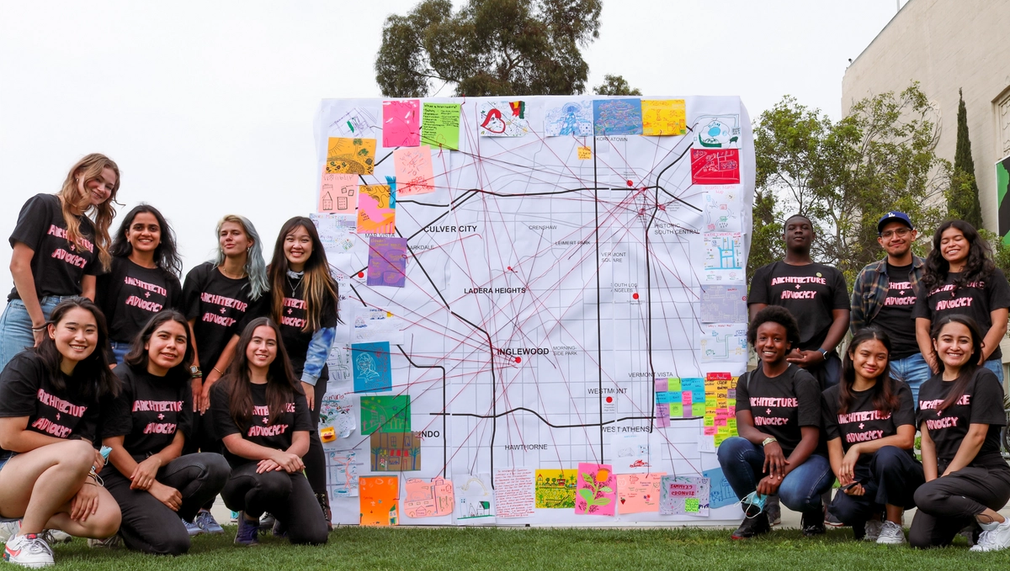Architecture + Advocacy: Undesign Injustice
Architecture + Advocacy hosts design workshops that empower K-12 students and their families to address the foundational causes of spatial injustice. Participants are equipped with the tools of architecture and Relational Creativity, which empower them to design grassroots solutions to spatial injustices affecting their neighborhoods. A+A workshops give participants an opportunity to reflect on their experiences with injustice, listen to others' experiences, and collaborate to design equitable solutions to real-world social issues.

What is the primary issue area that your application will impact?
K-12 STEAM Education
In which areas of Los Angeles will you be directly working?
South LA
In what stage of innovation is this project, program, or initiative?
Expand existing project, program, or initiative
What is your understanding of the issue that you are seeking to address?
Injustice is manifested in our built environment; segregation, evictions, food deserts, and even pollution, all disproportionately affect BIPOC neighborhoods. This spatial injustice is by design. Furthermore, BIPOC communities that are directly affected by these injustices often lack the power to influence development or implement solutions in their own neighborhoods. This power dynamic is also by design. Through conversations about spatial injustice, architecture design workshops, and community-building events, A+A empowers youth activists to take back their neighborhoods and undesign this foundation of injustice. Workshop leaders have discovered that even the simple act of drawing the floor plan of their bedroom inspires participants to think about their physical space and motivates them to take action against the injustices they perceive within their own neighborhoods.
Describe the project, program, or initiative this grant will support to address the issue.
Architecture and Advocacy host 5-week design charette workshops, in which participants design their version of the world-as-it-should-be through plans, sections, models, and other tools of architecture. For the past two years, through partnership with LA Commons, youth activists ages 13-18 created participant-driven designs of equitable communities, specifically for mental health and sustainability. Design is a powerful framework for tackling injustice as it is a reflective and collaborative exchange of ideas and a catalyst for community change. It provides an understanding of equity and social-emotional learning and focuses on developing leadership and empathy. In the past, our youth activists have designed mental wellness parks, community gardens, and pet cafes that provided emotional support and were gender-inclusive. We will continue to build upon these successful, participant-driven activities this year by expanding our charret curriculum to incorporate themes of designing with empathy, centering community voices and programming in neighborhoods. Through A+A workshops, participants will transform the conversation around cultural identity and space into the study of canonical and local sustainability practices by documenting cultural motifs in their neighborhoods in a “mind mapping” art installation. By empowering youth artists to design with their own culture, historically marginalized communities can celebrate their culture in a sustainable physical environment.
Describe how Los Angeles County will be different if your work is successful.
Architecture + Advocacy will meet with community-based organizations and youth programs to learn about their interests and any current barriers in exposing their students/participants to architecture, civic engagement, and creative problem-solving. These meetings will also discuss how A+A can leverage its industry-based partnerships to foster sustainable relationships between community organizations and architecture, design, contracting, and real estate firms for purposes such as mentorship, collaboration on local development projects, and more. A+A hosts workshops with 2-3 additional community-based organizations and youth programs. Community-based organizations and youth programs will represent a diverse array of program sizes and focuses and will actively provide feedback on Architecture + Advocacy services. That feedback will be used by the Architecture + Advocacy team to innovate and streamline its curriculum.
What evidence do you have that this project, program, or initiative is or will be successful, and how will you define and measure success?
Architecture + Advocacy has empowered 80 Youth Activists through 12 workshops with 3 community partners–LA Commons, LAUSD Gifted Network for Black Students, and the LD Central Arts program–producing 360 art pieces in two years. Through these workshops, 124 South LA K-12 students, in addition to their family members, have learned the fundamentals of architecture as a process for social activism. One participant shared their experience: "learning about architecture made me change my whole mentality. I realized we could make not only South LA better but also the whole world." From these workshops, A+A has developed a tested-and-proven curriculum for 5-session workshops (typically one session per week) across a range of topics addressing the physical environment including Health and Wellness, Sustainability, Culture, Human-Centered Design, and more. Over the next year, Architecture + Advocacy will continue to expand on its curriculum's breadth, length, and topics.
Approximately how many people will be impacted by this project, program, or initiative?
Direct Impact: 310
Indirect Impact: 2,200